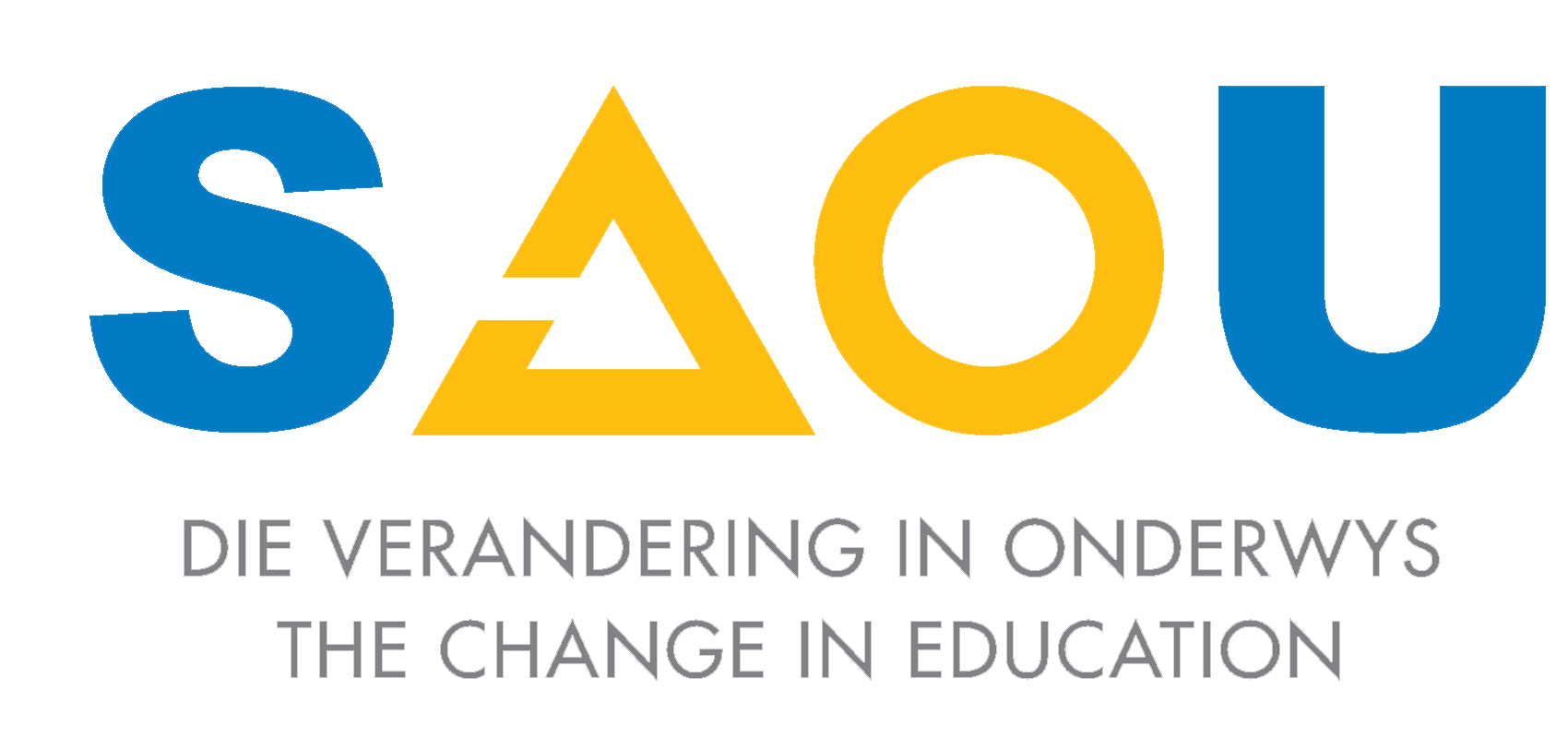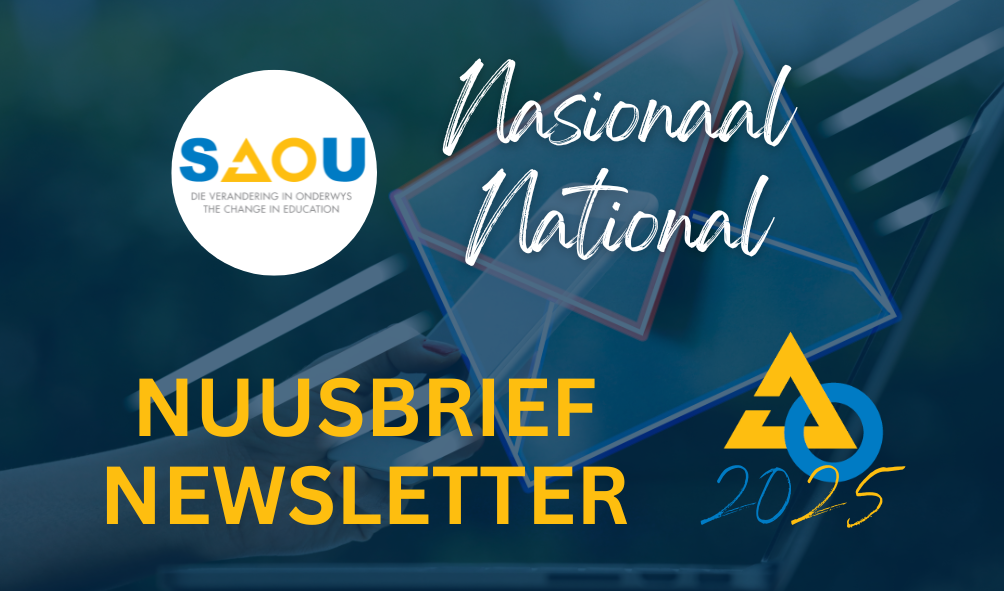
NN 14/2025
SOSIALE MEDIA:
DIE WOLF IN SKAAPSKLERE
Sosiale media het 'n integrale deel van ons daaglikse lewe geword, met miljoene mense wat sosiale media-platforms gebruik om met vriende, familie, kollegas, kliënte en leerders kontak te maak.
In die onderwys milieu het sosiale media-platforms egter ook 'n belangrike hulpmiddel geword vir aanlyn kommunikasie, betrokkenheid, sowel as vir die vinnige en maklike digitale verspreiding van inligting.
Die aanloklikheid van hierdie platforms is gegrond op die handige funksies soos die deel van foto's, video's, dokumentasie en inligting, terwyl dit ook kommunikasie met ander in die sosiale netwerk toelaat.
Dit is egter van kardinale belang vir opvoeders om te besef dat agter hierdie skynbare handige platforms skuil daar enorme gevaar. Gevolglik is die bekende idioom van “'n wolf in skaapsklere” direk van toepassing. Opvoeders moet besef dat sosiale media is iets wat as bedrieglik en gevaarlik beskou en benader moet word.
Dit is dus vir die SAOU belangrik om opvoeders goed bewus en waaksaam te maak teen die gevare wat die gebruik van hierdie platforms inhou. Die bewusmaking is gegrond op die kommerwekkende tendens van dissiplinêre verrigtinge wat teen opvoeders ingestel word weens wangedrag in verband met die gebruik van sosiale media in verhouding met leerders en kollegas.
Belangrike begrip rakende die gebruik van sosiale media
In onlangse studies is bevind dat 63,7% van die wêreldbevolking sosiale media-gebruikers is.
Dit is ook belangrik om daarop te let dat hierdie statistieke verder aandui dat gebruikers nie net van 'n enkele platform gebruik maak nie. Gemiddelde gebruikers versprei nou hul digitale voetspoor oor ʼn verbysterende ses tot sewe platforms.
Indien die risiko’s verbonde aan die gebruik van sosiale media in ag geneem word, beteken dit dat gebruikers nou ʼn uitgebreide omvang van moontlike risiko’s het.
Wat kwalifiseer as sosiale media?
Die definisie van sosiale media in die Oxford-woordeboek lui as volg:
"webwerwe en toepassings wat gebruikers in staat stel om inhoud te skep en te deel of om aan sosiale netwerke deel te neem".
Van die bekendste platforms sluit WhatsApp, Facebook, TikTok, Instagram, Facebook Messenger, Twitter/X, Telegram en Snapchat in.
Bestaan daar 'n wanpersepsie rondom sosiale media en hoe dit verband hou met die werkplek?
Die algemene wanpersepsie is dat opvoeders aanvaar dat hul sosiale netwerkplatforms persoonlik en privaat is en nie verband hou met hul werkgewers nie. Die veronderstelling word gemaak dat beskerming in plek is as gevolg van die skeiding tussen werk en persoonlike lewe, sowel as hul regte op vryheid van uitdrukking, assosiasie en privaatheid.
Die werklikheid is egter dat gevalle van onprofessionele gedrag en wangedrag deur opvoeders in verband met hul sosiale media gebruik, inderdaad onderhewig is aan vervolging.
Wat is die moontlike vorme van wangedrag op sosiale media waaraan opvoeders hul skuldig kan maak?
- Doelbewuste gebruik en misbruik om kontak met 'n leerder te maak.
- Onvanpaste verhoudings tussen opvoeders en leerders.
- Onprofessionele of onvanpaste gedrag wat vertoon word.
- Onprofessionele inhoud (foto's, video's, prente, ens.).
- Belediging of naamskending van enige belanghebbendes (leerders, ouers, opvoeders, die skool, skoolbestuur).
- Inhoud wat vir belanghebbendes ʼn verleentheid en/of aanstootlik kan wees.
- Die deel van inhoud rakend en/of uitlatings oor ‘n kollega.
Wat is die moontlike implikasies van oortredings op sosiale media vir opvoeders?
Die relevante wetgewing in hierdie verband sluit in:
- Grondwet van die Republiek van Suid-Afrika, 1996;
- Suid-Afrikaanse Skolewet, 84 van 1996;
- Wet op Indiensneming van opvoeders, 76 van 1998;
- Wet op Arbeidsverhoudinge, 66 van 1995;
- Wet op die Suid-Afrikaanse Raad vir Opvoeders, 31 van 2000;
- Die SARO-kode vir professionele etiek.
Opvoeders se gebruik van sosiale media moet binne die bepalings wees en aan die bogenoemde wetgewing en Kode vir Professionele Etiek voldoen. Die versuim om daaraan te voldoen, kan verreikende implikasies en gevolge hê. Afhangende van die omstandighede en meriete van elke geval, kan dit die volgende insluit:
- Dissiplinêre navrae en verhore;
- Waarskuwings;
- Skorsing;
- Ontslag;
- Verwydering van die SARO-register vir ‘n opgeskorte tydperk;
- Sanksie van 'n boete wat betaal moet word;
- Permanente deregistrasie by SARO.
In die meeste gevalle sal onprofessionele gedrag ook wangedrag en in sommige gevalle selfs 'n siviele of kriminele oortreding uitmaak. Die onprofessionele gedrag sal deur SARO en die wangedrag deur die werkgewer (Departement of SBL) ondersoek en hanteer word.
In lig van die Hoogste Hof van Appèl se beslissing in die Media 24 v SA Taxi Securitisation-saak is die volgende bepaal:
" It is trite that not only private individuals, but also legal persona have a right to their good name and unimpaired reputation and that the dignitas of companies can also be infringed."
Gevolglik is die openbare beeld en reputasie van 'n skool beskermingswaardig. Vergoeding kan geëis word vir skade wat aan die skool se reputasie aangerig is.
Skoolbestuur moet egter daarvan bewus wees dat daar 'n gemeenregtelike las op werkgewers geplaas word deur hul aanspreeklikheid vir die delikte van hul werknemers. Indien diskriminasie, haatspraak, teistering, skending van privaatheid of laster via sosiale media ʺgedurende die verloop en omvang van indiensneming” plaasgevind het, kan die werkgewer middellik aanspreeklik gehou word. Dit sluit selfs gevalle in waar die onregmatige gedrag van die werknemer buite die werkplek plaasgevind het. Daar moet egter objektief bevind word dat daar 'n voldoende noue verband tussen die werknemer se optrede en die doel en besigheid van die werkgewer is.
Die moontlikheid bestaan ook dat indien wangedrag op sosiale media aan die kant van die departement of skool as staatsorgane, ʼn versuim in hul grondwetlike plig om regte te respekteer, te beskerm, te bevorder en na te kom hulle direk aanspreeklik gehou kan word.
Hoe kan opvoeders die slaggate vermy wat die gebruik van sosiale media potensieel gevaarlik maak?
- Onthou altyd dat opvoeders op 'n hoë standaard van professionaliteit gemeet word weens die aard van die werk en die verantwoordelikheid om rolmodelle vir leerders te wees;
- Vermy die aanvaarding of bevriending van leerders op sosiale media;
- Tree uiters versigtig en professioneel op in die geval van kommunikasie met 'n leerder via sosiale media;
- Beperk kommunikasie en interaksie met leerders via sosiale media;
- Stel en behou duidelike grense, reëls en regulasies wanneer sosiale media as opvoedkundige instrumente gebruik word bv. WhatsApp-groepe vir leerders:
Maak seker dat die opvoeder die enigste administrateur van die groep is en die enigste persoon is wat inligting kan plaas. Dit dien dan slegs as 'n platform om belangrike/relevante inligting te deel en bestaan daar geen risiko's vir onvanpaste kommentaar/inhoud nie; - Gebruik professionele toon wanneer daar in verband met die skool se naam geplaas word.
- Wees waaksaam om geen onvanpaste inhoud te plaas wat moontlik enige belanghebbendes in die verleentheid kan stel of beledig nie;
- Gesprekke moet skool verwant gehou word;
- Weet dat wat geplaas word, moontlik gekopieer of versprei kan word;
- Wees versigtig vir die feit dat daar altyd 'n digitale voetspoor is. Net omdat inhoud verwyder word, beteken nie noodwendig dit is weg is nie;
- Indien moontlik, skep skool- en privaat rekeninge. Hierdie skeiding beperk ook sekere risiko's;
- Dit is noodsaaklik om gereeld toegang tot jou eie sosiale media-rekeninge te kry en om die plasings wat ander op jou profiel maak, te monitor;
- Indien 'n derde party 'n plasing maak wat moontlik onvanpas of skadelik is, moet dit verwyder word en moet jy jouself daarvan distansieer;
- Onthou dat plasings deur ander gedeel en versprei kan word en uiteindelik deur 'n onbekende aantal onbekende mense gelees en daarop kommentaar gelewer kan word;
- Maak seker dat privaatheid- en sekuriteitstellings in plek is;
- Selfs met bogenoemde instellings in plek, moet daar onthou word dat sosiale media-platforms openbare ruimtes is en jy dus die verwagting van privaatheid realisties moet bestuur;
- Daar is beperkte beheer oor aanlyn identiteite en dit is nodig om te besef dat selfs die kommentaar wat ander gebruikers op 'n persoon se sosiale media lewer en die inhoud waaraan 'n persoon gekoppel is, as getuigskrifte van ‘n persoon se aanlyn identiteit beskou word;
- Wees bewus daarvan dat plasings op sosiale media dadelik beskikbaar en oombliklik is, wat tot gevolg het dat dit onmiddellike reaksies gelok kan word;
- Om ‘n sosiale media-gebruiker te wees, is opsigself ‘n risiko, want selfs wanneer 'n opvoeder sosiale media heeltemal verantwoordelik gebruik en al die gegewe riglyne volg, kan dinge steeds verkeerd gaan.
In die joernaal artikel ‘Teacher Professionalization in the Age of Social Networking Sites: Identifying Major Tensions and Dilemmas’ deur Kimmons en Veletsianos (2015), is die volgende stelling gemaak:
“The reality of the situation is that teachers cannot afford to lead the same lives that many other professionals can.”
Dit is 'n geweldige uitdaging wat opvoeders in die gesig staar en skole moet optree om hul leerders en personeellede te beskerm. Daar is ook diepgaande voordele verbonde aan die gebruik van sosiale media-platforms as 'n metode om skool- en onderriggebaseerde inligting te kommunikeer. Deur duidelike riglyne, reëls en beleide in plek te hê, sal dit help om 'n verantwoordelike sosiale media-klimaat vir opvoeders te skep.
Indien jy twyfel of vrae het oor die onderwerp, moet asseblief nie huiwer om jou provinsiale SAOU-kantoor of die SAOU Regsafdeling te kontak nie.
2025/04/11
SOCIAL MEDIA:
THE WOLF IN SHEEP’S CLOTHING
Important understanding regarding the use of social media
Recent studies have found that 63.7% of the world's population are social media users.
What qualifies as social media?
The definition for social media in the Oxford dictionary reads as follows:
“websites and applications that enable users to create and share content or to participate in social networking”.
Does a misconception surrounding social media and its connection to the workplace exist?
- Deliberate use and misuse to make contact with a learner.
- Inappropriate relationships between educators and learners.
- Unprofessional or inappropriate behaviours displayed.
- Unprofessional content (photos, videos, images etc.)
- Defamation of any stakeholders (learners, parents, educators, the school, school management)
- Content which may be embarrassing/offensive to stakeholders.
- Posting content regarding, and/or making statements about a co-employee(s).
What are the possible implications of social media transgressions for educators' professions?
The relevant legislation in this regard include:
- Constitution of the Republic of South Africa, 1996;
- South African Schools Act, 84 of 1996;
- Employment of Educators Act, 76 of 1998;
- Labour Relations Act, 66 of 1995;
- South African Council for Educators Act, 31 of 2000;
- The SACE Code of Professional Ethics.
- Disciplinary enquiries and hearings;
- Warnings;
- Suspension;
- Dismissal;
- Removal from the SACE register, that is suspended for n certain time period;
- Sanction of a monetary fine to be paid;
- Permanent deregistration from SACE.
How can educators avoid the pitfalls that make social media use potentially hazardous?
- Always remember that educators are held to a high standard of professionalism due to the nature of working with and having the responsibility to be role models to learners;
- Avoid accepting or “friending” of learners;
- Tread extremely cautiously and act professional in the event of communicating with a learner via social media;
- Limit communication and interaction with learners via social media;
- Have clear boundaries, rules and regulations when using social platforms as educational tools like WhatsApp groups for learners:
Ensure that the educator is the sole administrator of the group and the only person who is allowed to post information. It then only serves as a platform to share important/relevant information and no risks for inappropriate comments/content exist. - Use professional demeaner when posting in connection with the school’s name;
- Be vigilant to not post any inappropriate content which may possibly embarrass or offend any stakeholder;
- Conversations should be kept school related;
- Know that what you post can potentially be copied or distributed;
- Be wary of the fact that there is always a digital footprint. Just because you delete content does not necessarily mean it is gone;
- If possible, have school accounts and private accounts. This separation also limits certain risks;
- It is essential to regularly access one's own social media accounts and to monitor the posts that others make on one's sites;
- If a third party made a possible inappropriate or possibly harmful post, one should remove it and distance oneself from the post or posts concerned;
- Remember that posts can be shared and distributed by others and may end up being read and commented on by an unknown number of unfamiliar people;
- Ensure that privacy settings are in place;
- Even with privacy settings in place, remember that social media sites are public spaces and you therefore need to realistically manage the expectation of privacy;
- There is limited control over online identities and one should know that even the comments other users leave on a person's social media and the content a person is connected to becomes ʺtestimonialsʺ to a person's online identity;
- Acknowledge that social media posts are imminent and instantaneous which has to the effect that it can draw immediate responses;
- Having social media is a risk in general, as even when an educator is using social media completely appropriately and follow all of the given guidelines, things can still go wrong.
“The reality of the situation is that teachers cannot afford to lead the same lives that many other professionals can.”


Slide title
'My experience with SAOU was outstanding. After months of struggle, they assisted me in obtaining my SACE certificate. Additionally, their thoughtful gesture of wishing me a happy birthday was particularly heartwarming.'
Keshia Erasmus
Button
Slide title
''Ons het gesukkel met 'n vakkeuse van 'n matriekleerling aan die begin van die jaar, aangesien haar ma verlede jaar die toestemmingsbrief na verkeerde e-pos gestuur het. Die departement het net volstrek geweier om haar vak te verander, al het sy al vir amper 'n kwartaal in die veranderde vak gesit. Ons het SAOU genader om hulp en dit was nie eers 'n paar dae nie toe kry ons die toestemmingsbrief vanaf die departement, vergesel met 'n verskoning.''
Lizé van Aswegen
Button
Slide title
''Flink diens. Akkurate inligting.'' Garetha
Button
Slide title
''Onderwerpe is spesifiek uniek, baie leersaam en word deur kundiges keurig aangebied.''
Gretie Luyt
Button
Slide title
''Best service and easy to find information. ''
Kgothatso Madibana
Button
Slide title
''My ervaring met SAOU is uitstekend tot dusver. Ek het aanlyn geregistreer en is bykans onmiddelik n lid.''
Janeke Jordaan
Button
Slide title
''Professional advice given and FAQ are very helpful. Staff knowledgeable and website insightful.''
Gregory McCullum
Button
Slide title
''Daar is dadelik aan my raad gegee.
Dokumentasie was vinnig aangestuur.
Andre Pretorius was vriendelik, bekwaam en van groot hulp met my probleem.''
Susan Jansen
Button
Slide title
''Excellent rating - For conducting the ongoing professional development workshops on content and on the
latest developments in education.
Continue with the excellent work.''
Molale DC
Button
Slide title
''My ervaring met die SAOU was uitstekend omdat die webwerf verbruikers-vriendelik is en ek maklik kon aansluit by die unie. Ek is ook vinnig gehelp toe ek hoofkantoor gebêl het. ''
Jacomien Davidson
Button
Slide title
"Hiermee wil ek graag my dankbaarheid uitspreek vir die geleentheid wat ek ontvang het om saam met my gade die kongres te kon bywoon. Die ervaring was werklik spesiaal. Die absolute professionele voorbereiding ten opsigte van administrasie asook die persoonlike ingesteldheid teenoor die ontvangers van die toekennings was indrukwekkend. Baie dankie vir die erkenning van die werk wat opvoeders doen, dit skep nederige dankbaarheid vir die taak wat God aan my toevertrou het."
E Havenga
Button
Slide title
''The manner of questions are spot on and one can only hope responses will fast and reliable... New website is highly informative ''
ShamielITIO Mohamed
Button
Slide title
''Ek wil graag net persoonlik dankie se vir ''n wonderlike Saterdag. Dit was absoluut die moeite werd!
Julle verwelkoming, fantastiese sprekers, middagete, geskenkpakkie en nog 'n wegneem kospakkie was uit die boonste rakke. Dis n voorreg om lid van die SAOU te kan wees.
Dankie en sterkte vir dit waarvoor julle staan en die puik diens wat ons as lede ontvang.''
Sunet Sanders
Button
Slide title
''My ervaring met SAOU is uitstekend omdat - om dit sommer plein en reguit te sê - in al die jare wat ek SAOU opleidings bygewoon / (Zoom) was nie een ooit 'n mors van tyd nie. Dit is altyd baie insiggewend en interessant. Ek leer ongelooflik baie by die aanbiedings. Baie, baie dankie vir julle puik diens. Ek waardeer dit opreg. Somtyds is dit moeilik om alles ingepas te kry, om na die opleidings te luister maar ek probeer maar altyd 'n plan maak om dit by te woon. Gaan voort met die goeie werk! Baie dankie'' Mathilde van Niekerk
Button
Slide title
''My ervaring met die SAOU was uitstekend omdat my vrae altyd vlugtig en deeglik beantwoord word. Ek voel vry om enige kwessie met die SAOU te bespreek en ek voel veilig sowel as beskermd wanneer ek kontak maak. Ek voel dat die SAOU as 'n uitstekende ondersteuningsnetwerk vir my dien en ek is nie seker dat ek onderwys, en die politiek daaragter, sou kon hanteer sonder 'n unie met wie ek so vertroud voel nie. Baie dankie!''
Karla du Toit
Button
Slide title
I got the answers to my questions and there was additional information I could browse on for more information.
Proudy Dlamini
Button
Slide title
Baie dankie vir alles wat julle alles vir my gedoen het hierdie jaar gedoen het .. al die dinge wat gesorteer het..al die help.. al die ondersteuning... Julle is puik...
Geniet julle vakansie!
Anneke Oberholzer
Button
CONTACT US
SAOU OFFICES
QUICK LINKS
BUSINESS HOURS
- Mon - Fri
- -
- Sat - Sun
- Closed
All Rights Reserved






